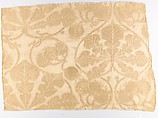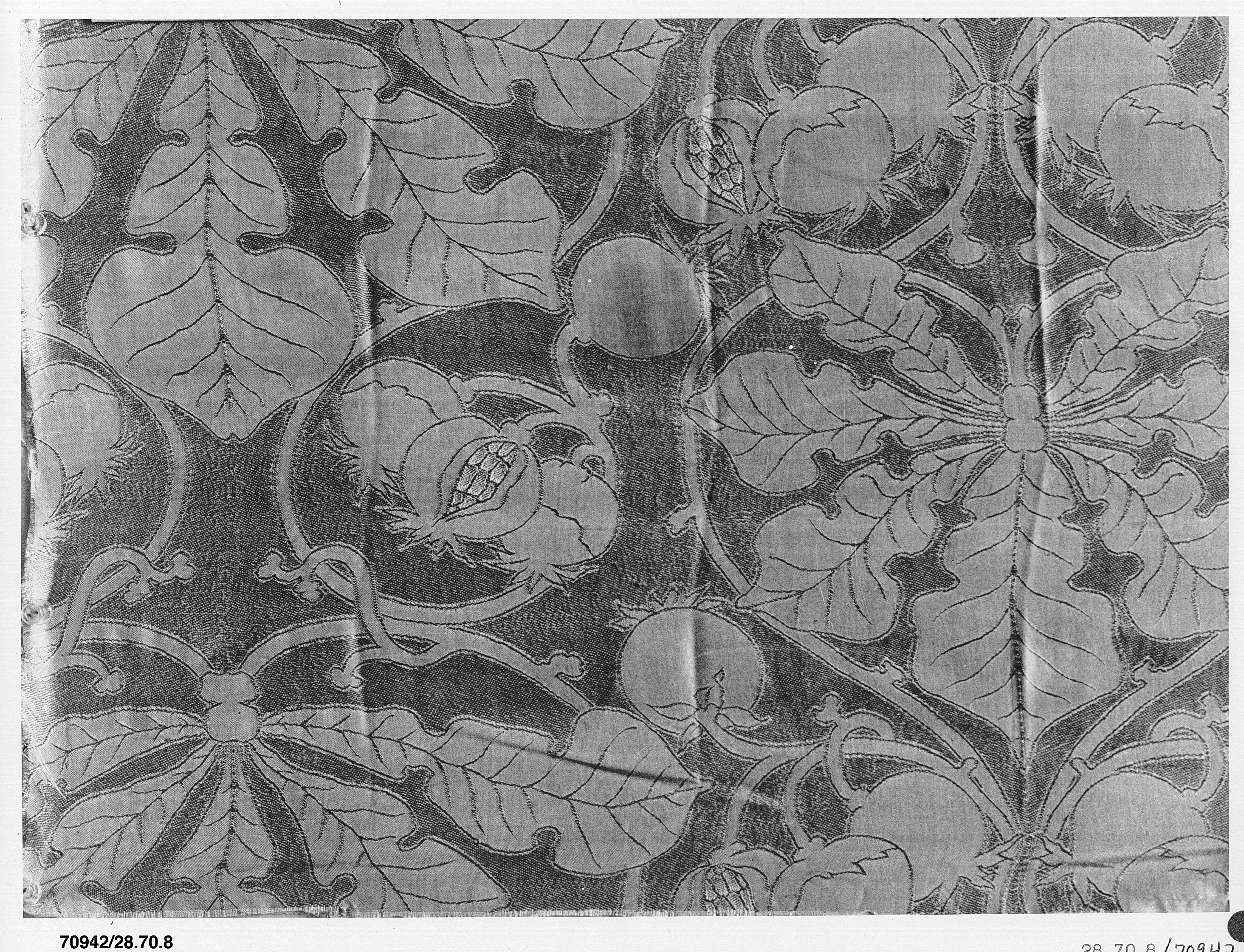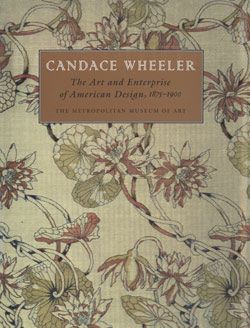Pomegranate textile
Designer Associated Artists American
Manufactured by Cheney Brothers American
Not on view
The pomegranate has a long history in Western art as a symbol of fertility because many seeds are contained in each fruit. It is especially common in fifteenth-century figured velvets of the Italian Renaissance, which feature patterns of pomegranates enclosed by sinuous stems and tendrils. These probably inspired Candace Wheeler (1827-1923) in the 1890s when she was searching for historical precedents. In the Library in the Woman’s Building at the 1893 Chicago World's Columbian Exposition, Wheeler employed a slightly modified version of this pattern—a heavy blue brocade rather than the damask seen here. The brocade was made into wide portieres and was also used to fill the fireplace opening of the room’s ornately carved mantelpiece.
Due to rights restrictions, this image cannot be enlarged, viewed at full screen, or downloaded.
This artwork is meant to be viewed from right to left. Scroll left to view more.




